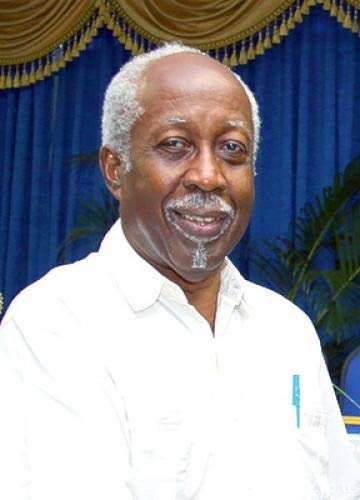Cockpit and related issues

Reginald Dumas
Pt II
WHAT IS the economic cost of a round-trip airbridge ticket? Minister Shamfa Cudjoe is reported as saying that, just to break even, CAL would need between $700 and $1,000. Given airline costs, she may well be right, or not too far off the mark. However, just imagine the outcry if such a whopping increase from the present $400 were introduced, or even floated as an idea.
But CAL is subsidised, you say. So it is, but what criteria govern the subsidy? Has it ever been enough? How is it paid? Is there a lump sum for all CAL operations, or are there separate amounts for its international and domestic routes? If separate, is there a transparent and effective cost separation and allocation framework that reveals the total annual direct and overhead cost of the airbridge service? If so, what relationship has this cost borne to actual budget provisions for, and payments to, CAL?
Just over one year ago, CAL told us that the airbridge was a consistent loss-maker (BWIA held the same position). In his 2022/3 budget presentation the Minister of Finance, while announcing an increase in the round-trip fare from $300 to $400, nonetheless pointed out that an annual airbridge subsidy of over $50 million would still be required.
But which is constitutionally more important, balancing your books or treating all your citizens equitably? For a variety of reasons, Tobago residents, whose incomes are not as high as those of their Trinidad counterparts, have to rely heavily on Trinidad. The airbridge and the seabridge are very essential – indeed, indispensable – services for them. (But will they try seriously to reduce that dependence?)
If the current subsidy is insufficient (which among other things means that CAL pays more attention to profit-making routes in the wider region than to Tobago), are Tobago residents to be confronted with a more than doubled airfare? And what about the tourism, to a large extent Trinidadian, on which the Tobago economy significantly depends?
The frustration displayed recently by THA Chief Secretary Farley Augustine and others is therefore perfectly understandable. I must however warn that emotion is not an adequate substitute for dispassionate analysis and decisions.
It has been announced that the matter of the negotiations between CAL and the pilots is to go before a Cabinet sub-committee. What has prompted this approach, and what relevant expertise this group may possess, I have no idea. But I do have two suggestions for all those involved – policymakers, negotiators, would-be airline operators, unions, etc.
First, could they study the Essential Air Service (EAS) model of the US government? They may also wish to hold discussions on that service with the US Department of Transportation, the responsible office. This is what the department says on its website:
“The Airline Deregulation Act (ADA), passed in 1978, gave air carriers almost total freedom to determine which markets to serve domestically and what fares to charge for that service…During the pre-ADA debates, the prospect of allowing carriers to terminate scheduled air service without prior government approval raised concern that communities with relatively lower traffic levels would lose service entirely as carriers shifted their operations to larger, potentially more lucrative markets.
“To address this concern, Congress added Section 419 to the Federal Aviation Act, which established the EAS program to ensure that smaller communities would retain a link to the National Air Transportation System, with Federal subsidy when necessary.” Procedures for compensation to airlines using the EAS are set out on the website.
Clearly, the EAS will not be wholly applicable to our circumstances. But we should gain a better idea of how to deal with those circumstances. That should, among other things, help reduce the venom that has unhappily become a major characteristic of official relations between Scarborough and Port of Spain.
Second, it’s not usual, so far as I know, for the international carriers of one country to be allowed to ply the domestic routes of another country.
For instance, CAL cannot pick up passengers in Miami who are bound for New York.
But what certainly can be done is have a private sector domestic airline serve the airbridge. (Perhaps two competing airlines, if economically feasible?) There is precedent for this in TT – remember Leslie Lucky-Samaroo’s Air Caribbean in the 1990s? It was the dedicated carrier on the route – BWIA, which, as I mention above, regarded the route as unprofitable, was happy to take its exit – and did well for several years. It received no subsidy (though it did get certain concessions, for instance on fuel), and my recollection is that it was invariably punctual. Its demise was brought about by factors extraneous to the airbridge.
I leave things there for the time being, and await further developments.


Comments
"Cockpit and related issues"